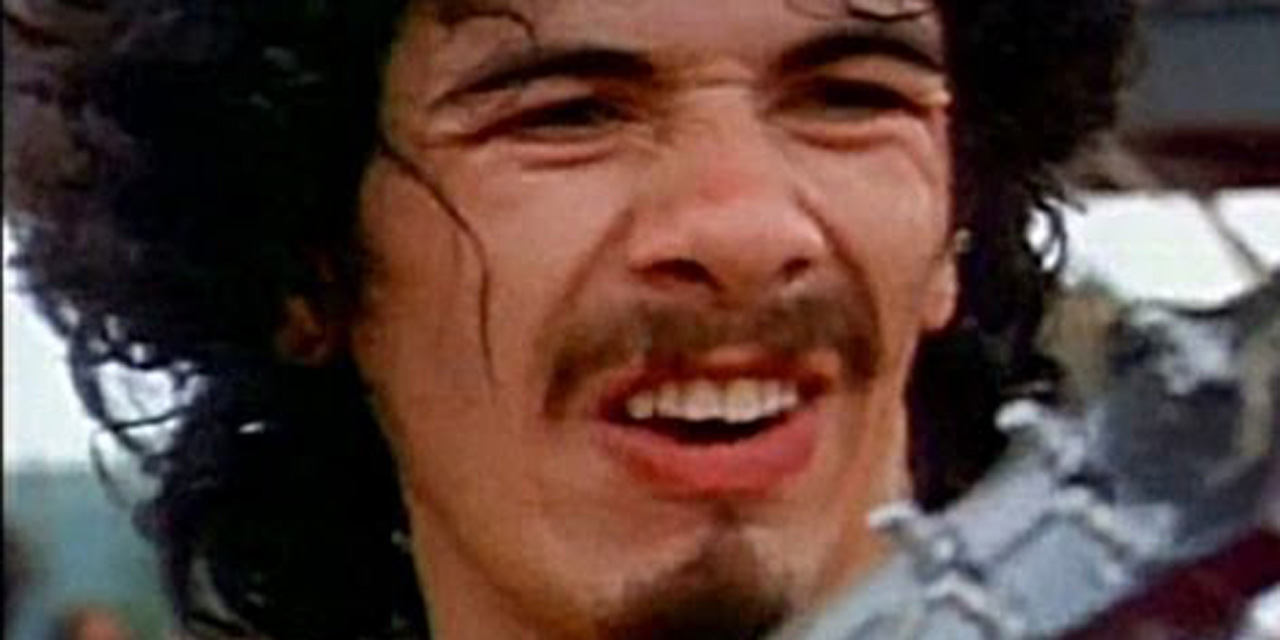There was a before, there was an after. Fifty years ago, the Woodstock wave swept the world. Europe 1 makes you relive, at the time of the festivals of the summer, the history of this revolution, not only by what it brought, but also by those which incarnated it. Today, Santana.
A hypnotic performance
The band did not even release their first album when Woodstock started. There is a mustachioed guitarist, a barefaced percussionist, a drummer who seems to be 16 years old ... Seven titles are on the program: the legend will be invited on the last one, Soul Sacrifice , a breathtaking musical performance. We are on Saturday, August 16, 1969, in a sudden burning afternoon. This young group is called Santana.
The title Soul Sacrifice has made history with the Woodstock documentary film, featuring young girls swinging and naked hippies in a trance. And then - and above all - thanks to the musicians. There's Michael Shrieve, the incredible 20-year-old drummer, Benjamin from Woodstock, and Carlos Santana, who instantly enters the gallery of the greatest guitarists, which was far from won for a kid born in a Mexican village and arrived in San Francisco in the early 1960s without even knowing English.
A pioneer of world music
Fortunately, music is a universal language and it is thanks to her that Santana, himself the son of a mariachi band musician, will assert himself throughout California. In 1966, he founded Santana Blues Band, then integrates Latin and Brazilian elements to his music. He is one of the pioneers of what will be called later world music. Example with a double cover in one piece: Black Magic Woman, from the group Fleetwood Mac, which is at that time a jewel of the English blues, mixed with Gypsy Queen , a composition of the Hungarian jazz guitarist Gabor Szabo. The quintessence of Santana style ...
This is the most famous excerpt from Santana's most acclaimed album, Abraxas . The band is very influenced by John Coltrane and Miles Davis, to the point of having used for the cover the same artist as for the album Bitches Brew of Miles Davis. Jazz is quickly becoming a musical obsession for Carlos Santana, who wants to break a maximum of cultural barriers. But all his musicians do not agree, and many changes follow in the castings of albums.
The guitarist, he continues to trace his singular route in the 1970s, between hard rock, salsa, jazz, music and a few intrusions into the world of pop. In 1976, he signed a success as colossal as unexpected, a slow that will set fire on the dance floors and in the balls of the campsites. How many couples have formed on this long, sweet and melancholy guitar solo?
Entered the Hall of Music
It is thanks to performances like these that Carlos Santana has entered the Hall of Contemporary Musicians: fifteenth best guitarist in rock history according to Rolling Stone magazine, and more than 100 million albums sold in total. After a slump in the 1980s, he has resumed the hair of the beast with an album at the level of his greatest, Supernatural , published in 1999. Always the same invitation to travel, the same guitar sound recognizable between a thousand ...
But it is indeed at Woodstock, a festival whose ideals he has never denied, that the legend of this unique musician has been forged. In his biography published in 2014, he declared: "The mentality was to live in peace, harmony and joy ... This dream has not disappeared and it is important to get up every day having it in mind ". The years after Woodstock will be the most prolific: all his albums hit hard.
Find all the other episodes of our series "Woodstock, 50 years later":
> Episode 1: The origins of the most iconic festivals
> Episode 2: Richie Havens, the story of a fate that topples
> Episode 3: Tim Hardin, dubbed by Bob Dylan, destroyed by drugs
> Episode 4: Joan Baez, the consciousness of a generation

